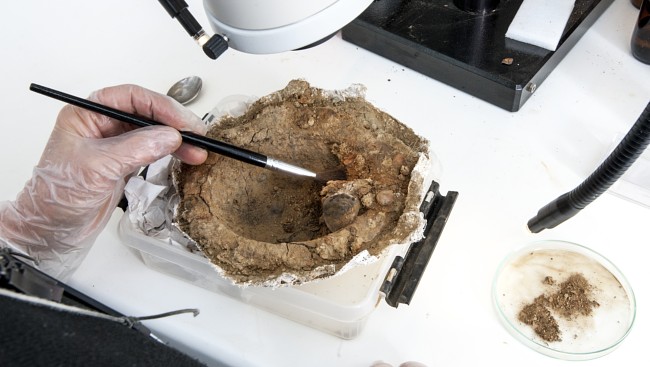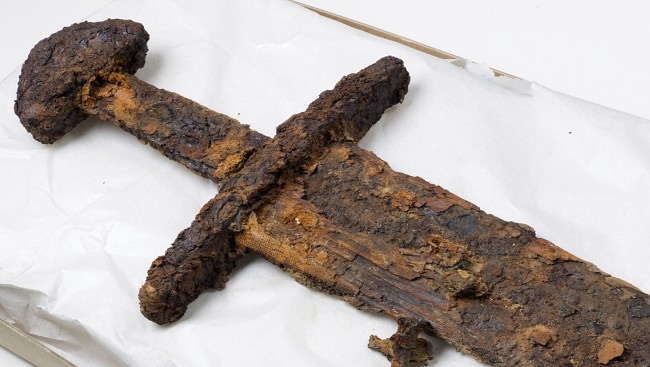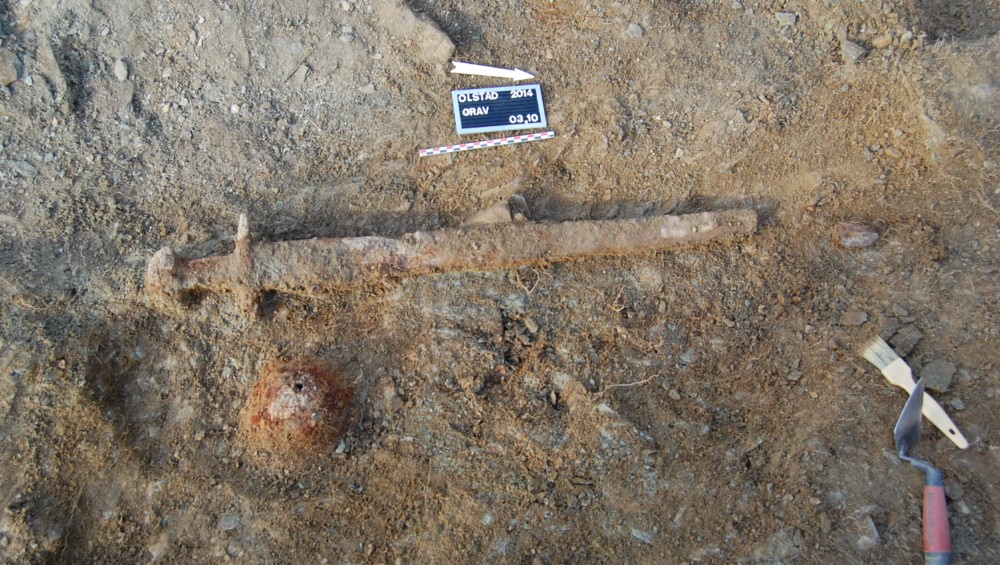Archaeologists have uncovered a Viking Age grave in Skaun, Norway that most likely contained the remains of a warrior. The person died in circa 950 AD and was buried with their weapons, which included a well preserved sword and shield boss.
 Remains of a leather purse were found inside the shield boss. (PHOTO: ÅGE HOJEM / NTNU / SCIENCE MUSEUM)
The wooden part of the shield had decayed and disappeared in antiquity but the metal boss survived. It contained a strike mark on its surface, most likely delivered by an axe or sword, indicating that it had been used in combat. More surprisingly, the shield boss also contained a number of Islamic coins, which had been hidden inside a leather bag.
Remains of a leather purse were found inside the shield boss. (PHOTO: ÅGE HOJEM / NTNU / SCIENCE MUSEUM)
The wooden part of the shield had decayed and disappeared in antiquity but the metal boss survived. It contained a strike mark on its surface, most likely delivered by an axe or sword, indicating that it had been used in combat. More surprisingly, the shield boss also contained a number of Islamic coins, which had been hidden inside a leather bag.
 Sword fully cleaned. Remains of an inscription and textiles have emerged (PHOTO: ÅGE HOJEM / NTNU / SCIENCE MUSEUM)
According to archaeologist Ingrid Ystgaard, the coins may indicate ‘that this person visited the eastern part of the Viking world, possibly a town such as Holmgard in what today is Russia‘.
Source: NRK
Sword fully cleaned. Remains of an inscription and textiles have emerged (PHOTO: ÅGE HOJEM / NTNU / SCIENCE MUSEUM)
According to archaeologist Ingrid Ystgaard, the coins may indicate ‘that this person visited the eastern part of the Viking world, possibly a town such as Holmgard in what today is Russia‘.
Source: NRK
Archaeologists have uncovered a Viking Age grave in Skaun, Norway that most likely contained the remains of a warrior. The person died in circa 950 AD and was buried with their weapons, which included a well preserved sword and shield boss.

Remains of a leather purse were found inside the shield boss. (PHOTO: ÅGE HOJEM / NTNU / SCIENCE MUSEUM)
The wooden part of the shield had decayed and disappeared in antiquity but the metal boss survived. It contained a strike mark on its surface, most likely delivered by an axe or sword, indicating that it had been used in combat. More surprisingly, the shield boss also contained a number of Islamic coins, which had been hidden inside a leather bag.

Sword fully cleaned. Remains of an inscription and textiles have emerged (PHOTO: ÅGE HOJEM / NTNU / SCIENCE MUSEUM)
According to archaeologist Ingrid Ystgaard, the coins may indicate ‘that this person visited the eastern part of the Viking world, possibly a town such as Holmgard in what today is Russia‘.
Source: NRK

No comments:
Post a Comment